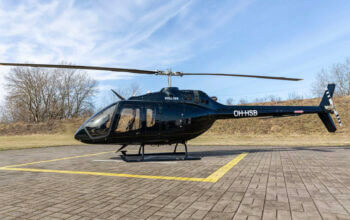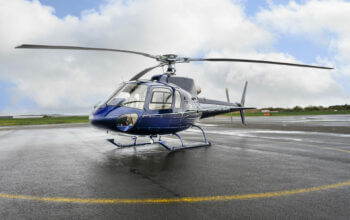Estimated reading time 6 minutes, 36 seconds.
Following the 2019 approval of the merger of two airlines that serve Canada’s northern communities, First Air and Canadian North, the federal government on April 21, 2023, announced new terms and conditions of the merger.
First Air and Canadian North — respectively owned by Makivik Corporation and the Inuvialuit Regional Corporation — said the reason for the merger stemmed from “the highly inefficient status quo of two airlines operating overlapping flight schedules with aircraft capacity that has far exceeded demand on most routes.” The airlines noted that this led to “higher airfares and cargo rates,” and hindered any investments in improving their operations.
When the airline merger was first approved, it was subject to terms and conditions that were intended to protect the public interest, as there were concerns about decreased competition and reduced air services in the communities in Nunavut and the Northwest Territories that relied on the airlines.

Those terms and conditions included: No price increases for both passenger travel and cargo delivery beyond those related to operating costs; no reductions to the weekly schedule options on all routes of the airlines’ combined network; and access to northern infrastructure (facilities and equipment) for new airlines entering the market, among others.
Following the merger, the new Pan-Arctic airline began operating under the “Canadian North” banner, utilizing the First Air livery for its fleet of Boeing 737-200, -300, and -400 Combi aircraft; 737-300, -400, and -700 aircraft; and ATR 42-300 and -500 aircraft — which are all gravel and ice strip equipped to land in remote locations. The merged airline, which is 100 percent Inuit-owned, is headquartered in Ottawa, Ontario.
In the Canadian government’s April 21 announcement, it noted that the air transport landscape drastically changed with the onset of the Covid-19 pandemic, which impacted “Canadian North’s ability to comply with the existing conditions, while also providing service to northern communities.”
The press release goes on to say that Canadian North was exempted from its scheduling obligations during the pandemic, and received $138 million in direct funding from the government.
In light of this, the government and Canadian North have come to a new agreement that will allow the airline “to remain financially viable and sustainable, while continuing to provide required levels of service to rural and remote communities in Northern Canada.”
The two entities have agreed on a profit cap, where Canadian North’s routes and fares can be adjusted as needed “without cutting off communities or placing a significant financial burden on northern travellers,” the press release states.
As part of the new terms and conditions, Canadian North must ensure that all communities it currently serves continue to receive at least one scheduled flight a week. If passenger load factors exceed 85 percent on average on any given route for a period of six consecutive months, Canadian North must adjust its capacity/schedules to reflect the increased demand.

Moreover, the airline must limit average annual regional fare increases for both passenger and cargo transportation to 25 percent within a calendar year; limit yearly net profit margins to no more than 10 percent on its scheduled passenger and cargo network (excluding the Edmonton-Yellowknife and Montreal-Kuujjuaq routes), while also being able to recoup past losses over a three-year period; and provide information for quarterly auditing by an independent monitor.
Canada’s Transport Minister, Omar Alghabra, will also maintain regular oversight to “ensure that the public interest in maintained.”
“Canadian North provides an important service to the North, and is the only true full network air carrier in much of the region,” said Alghabra. “These new terms and conditions will ensure northern and remote communities have the access to the air services they need, while at the same time ensuring Canadian North remains a viable service provider.”
The news from the federal government came just one day after Canadian North announced a new flight schedule for the communities served by its ATR aircraft. The carrier said the changes will come into effect in early May, and “will provide passengers and cargo customers with faster service and better southern/northern connections, all with no increases to fare or cargo rates.”
Canadian North has not yet issued a statement regarding the new terms and conditions of the merger.








